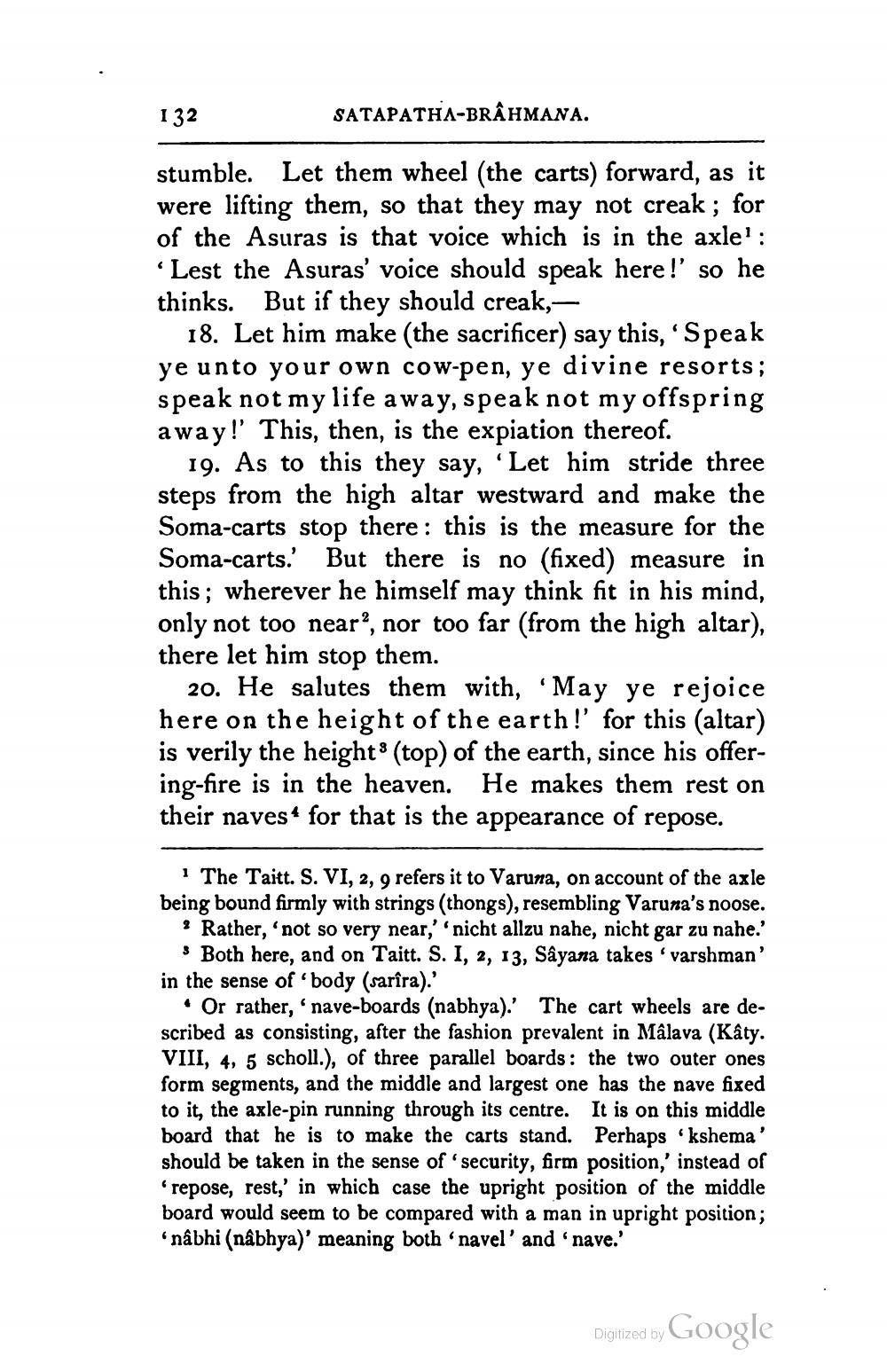________________
132
SATAPATHA-BRAHMANA.
stumble. Let them wheel (the carts) forward, as it were lifting them, so that they may not creak; for of the Asuras is that voice which is in the axle! :
Lest the Asuras' voice should speak here!' so he thinks. But if they should creak,
18. Let him make (the sacrificer) say this,'Speak ye unto your own cow-pen, ye divine resorts; speak not my life away, speak not my offspring away!' This, then, is the expiation thereof.
19. As to this they say, “Let him stride three steps from the high altar westward and make the Soma-carts stop there: this is the measure for the Soma-carts. But there is no (fixed) measure in this; wherever he himself may think fit in his mind, only not too near’, nor too far (from the high altar), there let him stop them.
20. He salutes them with, 'May ye rejoice here on the height of the earth!' for this (altar) is verily the height: (top) of the earth, since his offering-fire is in the heaven. He makes them rest on their naves4 for that is the appearance of repose.
1 The Taitt. S. VI, 2, 9 refers it to Varuna, on account of the axle being bound firmly with strings (thongs), resembling Varuna's noose.
? Rather, 'not so very near,' nicht allzu nahe, nicht gar zu nahe.'
3 Both here, and on Taitt. S. I, 2, 13, Sâyana takes 'varshman' in the sense of body (sarîra).'
Or rather, nave-boards (nabhya).' The cart wheels are described as consisting, after the fashion prevalent in Mâlava (Kâty. VIII, 4, 5 scholl.), of three parallel boards: the two outer ones form segments, and the middle and largest one has the nave fixed to it, the axle-pin running through its centre. It is on this middle board that he is to make the carts stand. Perhaps kshema' should be taken in the sense of security, firm position,' instead of "repose, rest,' in which case the upright position of the middle board would seem to be compared with a man in upright position; nâbhi (nâbhya)' meaning both navel' and 'nave.'
Digitized by Google




